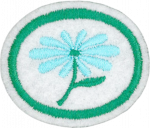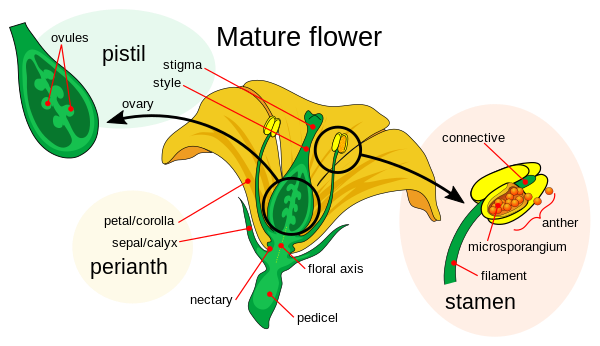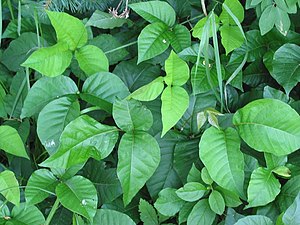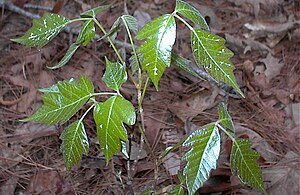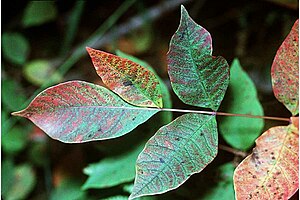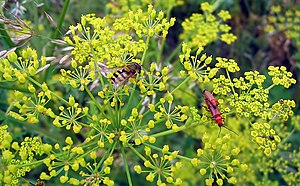AY Honors/Flowers/Answer Key/es
| Flores | ||
|---|---|---|
| Asociación General
|
Destreza: 2 Año de introducción: 1928 |
|
Requisitos
| Conexión Logros para la Investidura: Esta especialidad está relacionada con los requisitos de Logros para la Investidura para ORIENTADOR DE NUEVAS FRONTERAS Estudio de la naturaleza que requiere (como una de dos opciones) dibujar, fotografiar o coleccionar fotos de 20 clases de flores similar al requisito #1 de esta especialidad. Esta especialidad es una elección popular para la especialidad de la categoría de Estudio de la naturaleza de nivel de destreza 2 o 3 requerido para los ORIENTADORES DE NUEVAS FRONTERAS. |
1
This website http://www.realtimerendering.com/flowers/flowers.html can help you identify flowers by entering in the answers to several questions. It would be a good idea to print out the form and take copies with you into the field. Some of the questions are difficult to answer unless you have the plant right in front of you.
2
- Pistil
- The pistil is the female portion of the flower located at the center of the blossom. It consists of the style, stigma, and ovary.
- Stamen
- The stamen is the male portion of the flower, and it is clustered around the pistil. It includes the filament and anther. Most flowers have multiple stamens.
- Petal
- Also known as the corolla, the petals enclose the reproductive organs of a flowering plant. They are often brightly colored to attract pollinators, and lend beauty to the plant.
- Sepal
- Also known as the calyx, the sepal encloses the flower when it is in bud form. When the sepals open, the petals are revealed. They are often (but not always) green and leafy-looking.
3
4
- A seed needs warmth and water to grow roots.
- The flower sprouts up and down at the same time, send a shoot upwards, and a root downwards.
- The flowers grow more leaves.
- The blossoms open.
- Bees and other insects pollinate the flowers.
- The flowers form seeds.
- The seeds are dispersed and take root.
- The cycle repeats.
5
Poison Ivy, Poison Oak, and Poison Sumac all fall into this category. Poison ivy grows all over North America, and is most fond of disturbed areas such as stream banks and roadsides. Poison oak grows primarily in Texas, Oklahoma, and the Southeastern and Western United States. Poison Sumac is found in subtropical and warm temperate regions throughout the world, with the highest diversity in southern Africa.
Another plant to watch out for is the wild parsnip (Pastinaca sativa). This plant has an edible tuber, and indeed was cultivated for this for centuries. But if contact with the plant is made with wet (or sweaty) skin, followed by exposure to sunlight, it can cause a purple rash that can last several weeks. In some cases, the discoloration caused by the rash can be permanent.
6
6a
It is sometimes difficult to assign a color to a flower. Some varieties of a flower in a given species will have blossoms in one color, while another variety will have them in another. Some flowers are difficult to call blue or violet, as the color lies somewhere in between. Red and violet flowers can also be in between. Use your best judgment to meet this requirement. We present a few possibilities here, so do not feel constrained by this list.
| Red | Orange | Yellow | Green | Blue | Violet |
|---|---|---|---|---|---|
|
|
|
|
|
|
6b
The following are some possible flowers for your collection.
| Five petals | Four petals | Three petals | Apetalous |
|---|---|---|---|
|
|
|
|
6c
This requirement is a fun activity that your Pathfinders are sure to enjoy. Select the flowers carefully, either from your garden (or one you have permission to "raid"), or from a store that sells flowers (a florist or a grocery store). Smell them to be sure they each have a discernible odor, and then determine their identities (you can use a key to do this). Cultivated flowers will generally have a stronger aroma than wild flowers. Allow each Pathfinder to sniff all the flowers without blindfolds so they can learn the smells. When a Pathfinder is ready, apply the blindfold, and hold the flower near the nose. Allow each flower to be sniffed and have the Pathfinder announce its supposed identity. If the Pathfinder cannot get two out of five in the first, try, allow him (or her) to smell them again without the blindfold and be sure the flower can be identified without the blindfold. Then try again.
6d
- 1. Birds:
- 2. Honeybees:
- 3. Bumblebees:
- 4. Butterflies:
- 5. Moths:
It may be necessary to use a pair of binoculars for this requirement, as birds are highly unlikely to visit any flower a Pathfinder is hovering over. Hummingbirds are the most likely avian visitors you will see visiting a flower for food. Bumblebees can be distinguished from honey bees by their size (bumblebees are two or three times larger).
6e
This can be an excellent activity for a campout. The post-dusk observations are quite suitable as a vespers activity, and the daytime observations work well during the Sabbath morning services.
Compare this requirement with requirement 7 of the Shrubs honor.
References
- Categoría: Tiene imagen de insignia
- Adventist Youth Honors Answer Book/Honors/es
- Adventist Youth Honors Answer Book/es
- Adventist Youth Honors Answer Book/Skill Level 2/es
- Categoría: Libro de respuestas de especialidades JA/Especialidades introducidas en 1928
- Adventist Youth Honors Answer Book/General Conference/es
- Adventist Youth Honors Answer Book/Nature/es
- Adventist Youth Honors Answer Book/Nature/Primary/es
- Adventist Youth Honors Answer Book/Stage 0/es
- Adventist Youth Honors Answer Book/IAConnection/es
- Adventist Youth Honors Answer Book
- Adventist Youth Honors Answer Book/Do at home
